How to use eye drops correctly

Table of contents
Many people regularly use over-the-counter eye drops to relieve dry eyes, reduce redness, or soothe irritation. Others may be prescribed medicated drops to treat glaucoma or help aid healing after ophthalmic surgeries.
No matter the reason, using eye drops correctly is important to ensure their effectiveness. Lentiamo's opticians have created a guide to help you use eye drops so you can see and feel better! You'll find step-by-step instructions and useful tricks to putting in eye drops below. Let's go!
What you need
There are many popular eye drops that tackle a variety of symptoms. No matter what type you use, you just need a few supplies. Gather your eye drops, instructions from the package, and a clean cloth or tissue to wipe away any excess drops. It's that easy.
How to put in eye drops
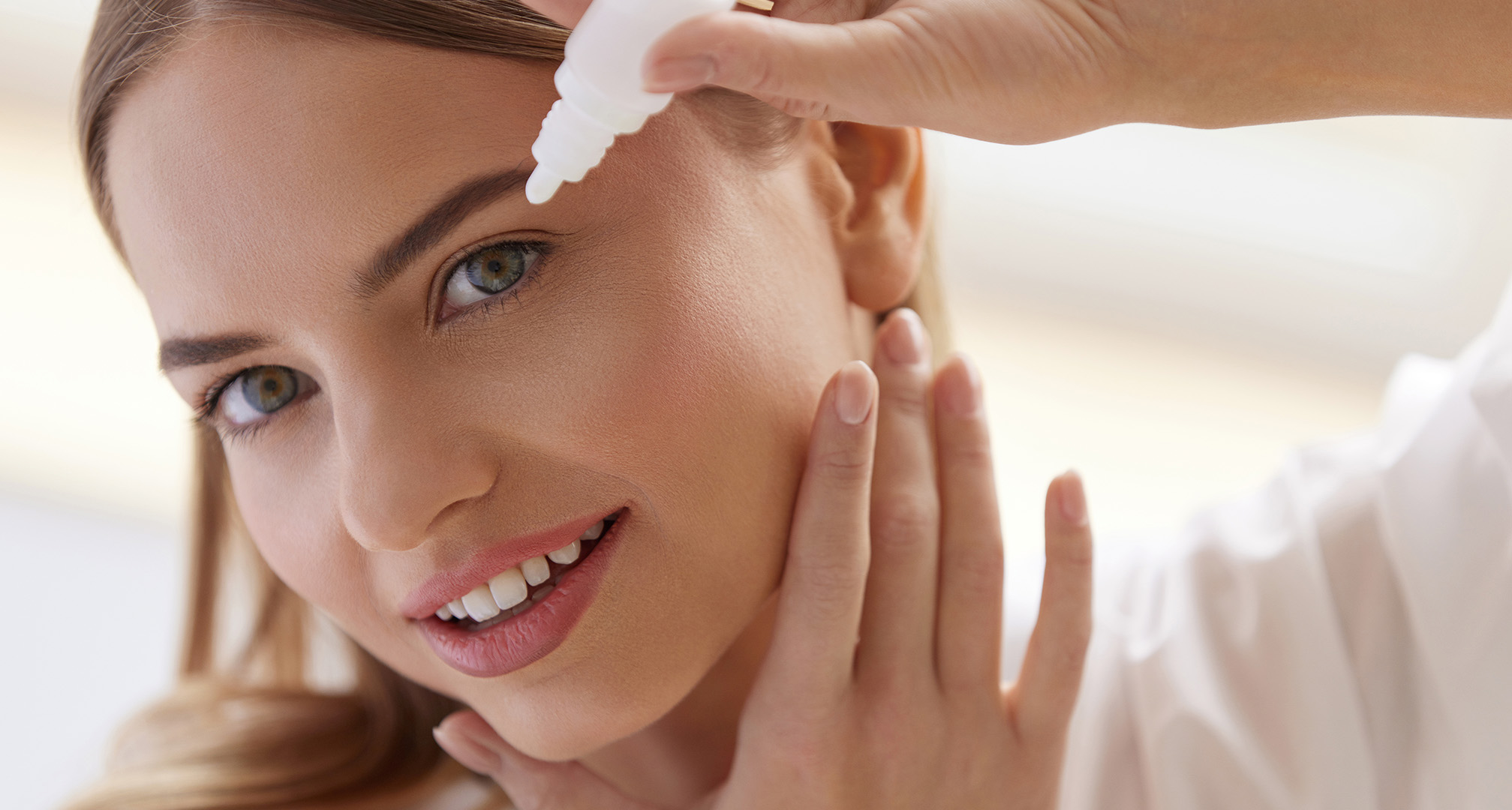
Before putting in eye drops, gather your supplies and instructions. Thoroughly wash your hands with soap and water and dry them with a clean, lint-free towel. Gently shake the bottle to mix the eye drops if directed by your eye care provider or the manufacturer.
Follow these steps when you're ready:
- Tilt your head back and look up.
- With one hand, gently pull the lower eyelid down to create a "pocket" for the eye drops.
- Slowly squeeze the prescribed or recommended number of drops into the pocket.
- Release the lower eyelid and close your eye gently.
- If directed, blink a few times to evenly distribute the eye drops across the eye.
Note: Your eye care specialist might advise you to refrain from blinking after instilling eye drops. They might instead tell you to keep your eye closed for about one minute and apply gentle pressure to the inner corner of your eye (near your nose). This allows certain drops to be absorbed properly.
If you use different types of eye drops for different eye conditions, wait five minutes or more between drops. Your provider can offer the best advice for your specific drops, however. Be sure to consult them with any questions.
What to do when you struggle with applying eye drops
It gets much easier to instill eye drops with a little practice and patience. The trick is to find a position and method that work best for you. As long as you follow good hygiene practices, there are a number of ways to make using eye drops easier.
Take a break if you find yourself getting frustrated or try some of the following tips!
Change your position
If you aren't able to lean your head far back enough while in a seated position, try instilling the drops while lying down. Just be sure to avoid contamination of the bottle when getting into position. This will help you get the bottle at the right angle.
Use a mirror
You can also try standing next to a mirror. This will help you see where the drops are going and make it easier to aim the bottle to the inner corner of the eye.
Use your non-dominant hand
If you're able, use your non-dominant hand to instill eye drops. Pull your lower eyelid down with your dominant hand, or use it to guide and stabilise the bottle more effectively. Be sure the drops go into the inner corner of the eye for better absorption.
Ask for help
If you're still having trouble using eye drops, you may find it helpful to ask a family member or friend for assistance. This can also help you get used to the sensation of eye drops in your eyes if you're anxious about putting drops in yourself.
Do's and don'ts when applying drops
✅
- Do wash your hands with soap and water before using eye drops
- Do read the instructions on the package
- Do follow any directions from your eye care specialist
- Do remove contact lenses if necessary
❌
- Don’t touch the tip of the tip of the bottle with your hands
- Don’t let the tip of the eye drop bottle touch your eye, eyelid, or any other surface
- Don't use more or fewer drops than recommended
- Don't use eye drops past their expiration date
Can I use eye drops with contact lenses?

Although contact lenses are generally comfortable to wear, sometimes dryness, red eyes, or discomfort can occur. Eye drops can provide relief for these unpleasant symptoms by lubricating lenses. However, there are different types of eye drops and not all are intended for use with lenses. It's important to use the right eye drops and follow any instructions to keep your eyes and lenses happy.
Pro tip: Check with your eye care specialist if you have doubts about specific eye drops and your contacts. Always read the label carefully to see if the drops are compatible with your lenses. Using eye drops that aren't meant for use with contacts can cause damage or unwanted symptoms.
Frequently asked questions
How do eye drops work?
Eye drops work by delivering medications directly to the eyes, where they can directly target the affected area.
Why do people use eye drops?
Eye drops can be used to treat a variety of eye conditions, including allergies, infections, glaucoma, and dry eyes. They provide relief from symptoms such as redness, itching, swelling, and discomfort. Sometimes they are also prescribed after surgeries, such as cataract surgery, to help eyes heal and prevent infection.1
What is the best time to use eye drops?
Generally speaking, there isn't a "best" time to use eye drops. The frequency or time of day depends on the type of drops and your needs. In addition to following the instructions on the packaging, follow the guidance of your eye care professional to determine the best time to use eye drops for your particular condition or situation.
How often should I use eye drops?
The frequency of using eye drops varies depending on the type of drops you use. It is also largely determined by directions from your eye care specialist. Always follow their guidance to get the most out of your usage.
Should you blink after putting eye drops in?
Yes, Chief Optician Jakub Odcházel, DiS. advises blinking after instilling eye drops. As the eyelid moves, it helps the liquid spread across the eye. Blinking after instillation is recommended for classic eye drops that treat conditions like eyestrain, aid in hydration, or increase comfort with or without contact lenses. Your eye care professional can advise you to blink or keep your eye closed depending on the purpose of your drops.
Do eye drops have side effects?
Eye drops may cause side effects such as mild stinging or burning, blurry or cloudy vision, and redness. If any of these side effects persist, contact your eye doctor.
Closing thoughts from Lentiamo
Eye drops are a great tool to relieve eyes and keep them healthy. If you struggle to put eye drops in, remember that it gets easier with practice. Use this guide as a reminder that it gets easier.
Follow these expert tips from Lentiamo's Chief Optician Jakub Odcházel, DiS. to help you put eye drops in more easily.
Sources
1. American Academy of Ophthalmology, A Review of Post-Operative Drops used in Cataract Surgery


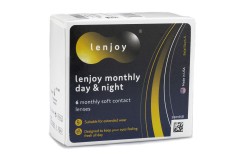
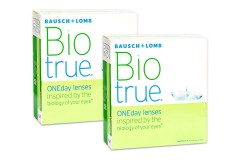
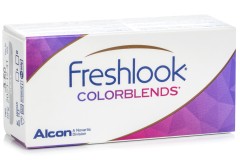
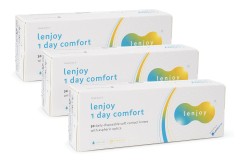
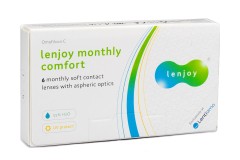
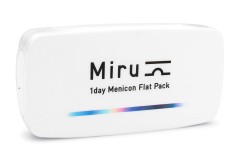
Comments